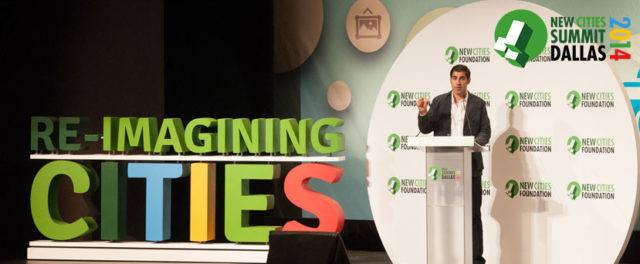Future Trends in the Century of Cities
septembre 23, 2014 — Uncategorized
This post is part of our Re-imagining Cities discussion series, following the third edition of the NewCities Summit in Dallas in June 2014.
Introducing this century as the century of cities, Parag Khanna focused on making certain the assembled audience fully understood the magnitude of the growth of cities throughout the world.
Amid the battery of statistics that he offered, the one that stood out the most was that, at the dawn of the 21st century, 50 per cent of the world’s population was firmly rooted in urban areas – a number that was expected to shoot up to 70 per cent by 2035. Khanna further asserted that by 2025, one sixth of the world’s richest cities will be in China. When addressing the meaty notion of urban development, Khanna created the mash-up term “diplomacity,” which he described as where “you don’t have to be a capital city to be a driver in diplomacy”. He then went on to describe Hong Kong as a prime example of a city where its pure sovereignty and other aspects of its geography were never the primary drivers in its success.
You don’t have to be a capital city to be a driver in diplomacy.
The notion “diplomacity” is also strengthened by the fact that many heads of state were once city mayors. With reputations built on tangible, local achievements, including working with potentially unwieldy multi-ethnic societies, mayors vaulted themselves to the top as either national or diplomatic leaders.

You can read more about the century of cities and the environment in L’Opinion, or learn more about Parag’s work via his website.
Speakers
Parag Khanna, Managing Partner, Hybrid Reality – @paragkhanna
